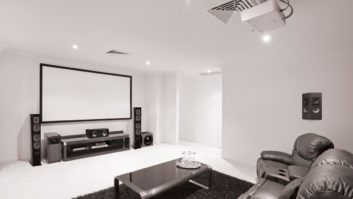When Phoenix-area viewers tuned in for the late news on KPNX on Nov. 2, the first night of November sweeps, the NBC affiliate offered a crisp, new view of the headlines. For the first time, Gannett-owned KPNX produced and broadcast its news in high-definition.
Lin Sue Cooney and Mark Curtis anchored from a glittering new set. The station’s helicopter relayed images from its new HD camera, and new graphics complemented the look. The upgrades were all designed to show off the clearer picture and widescreen format that are the hallmarks of hi-def.
With the conversion, KPNX became the first station in Arizona to go hi-def, and it trumpeted the move in promo spots and in the news.
Despite the fanfare, however, its audience is limited. KPNX estimates that about a quarter of Phoenix homes have HD sets, above the national average of 10 percent-15 percent penetration but hardly a majority. KPNX general manager John Misner said the station’s early upgrade is a long-term effort for the station to keep up with technology and win new viewers.
“Our viewers are moving to HD at a rapid rate,” he said. “We want to be there to serve them, and we want to be first to do it.”
KPNX is the eighth Gannett station to convert to high-definition local-news production but one of only two dozen or so nationwide to make the switch; about half of those have done so this year. The conversions are prompted by falling equipment prices and increasing household penetration. But given that the Radio-Television News Directors Association counts 772 stations that produce local news, the HD explosion is more like a pop gun at the moment.
It’s a simple cost/benefit analysis. Stations have to weigh high costs against what are currently minimal returns. High-definition costs a station at least several million dollars for the new studio, field cameras and editing equipment necessary, as well as upgraded sets and graphics. So far, say many station managers, penetration is too small to justify the expense.
Currently, HD signals are being received by 10 million-15 million TV sets, although that number is expected to climb quickly. Also, Nielsen Media Research currently does not measure HDTV viewership on stations’ digital channels, so stations cannot even sell that potential viewership.
“Most broadcasters know it is the right thing to do and that they must do it,” said station consultant Bruce Northcott, of Crawford, Northcott and Johnson. “Then the discussion turns to, Can we afford it? Is there any evidence we’ll do better in ratings or sales?”
Gannett’s KUSA Denver and Capitol Broadcasting’s WRAL Raleigh-Durham, N.C., were among the early pioneers in HD local news.
The latest crop includes major-market heavyweights NBC Universal’s WNBC New York, ABC’s WPVI and Fox’s WTXF Philadelphia, and Cox Broadcasting’s KTVU San Francisco. A handful of mid-market affiliates are upgrading, too, such as Landmark Communications’ KLAS Las Vegas and Dispatch Broadcasting’s WTHR Indianapolis.
In most cases, these stations are the first in their markets to go HD. Only Cleveland, Seattle and Atlanta have two HD-producing stations owned by different companies. Station managers say they want to be first in their market to adjust to technology and, hopefully, solidify a competitive advantage.
“When viewers have an HD set, they usually graze the HD tier first,” said KLAS general manager Emily Neilson. “We want them to sample us and come back.”
For now, station managers admit, they can rely only on anecdotal evidence from viewers who say they watch more TV because of the HD content.
Although advertisers may not yet be rewarding stations for going HD, media buyer Sue Johenning, executive VP of local broadcast for Initiative Media, said the content is an attraction for viewers, and she thinks that will be particularly true as more households buy sets this holiday season. “I don’t know if it gains a station viewers over time, but it does give them sampling,” she said. “It gives you an opportunity to distinguish yourself from the competition.”
In Boston, Hearst-Argyle-owned ABC affiliate WCVB converted its venerable nightly local newsmagazine Chronicle to hi-def last month, and plans call for its news to go HD soon.
“Given the choice, we think people will watch more HDTV than analog,” says general manager Bill Fine. “We’re going out ahead of the curve, but we know it is going to accelerate.”
Stations Producing And Broadcasting In HD








